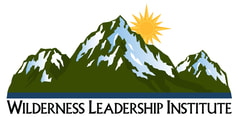Snowpack Summary January 15, 2022
Posted by Allen Giernet @ 8:25am (this summary expires in 48 hours)
This summary applies to backcountry areas only.
The Bottom Line –
Our first overnight freeze in several days will start this morning with a chance of fast firm conditions especially above 8,000’. Avoid slide for life scenarios by having the proper equipment and being aware of the conditions. The chance of Loose Wet Snow instability will develop through the day again at lower elevations into upper elevations on E-SE-S-SW-W aspects. Wet snow instability will be unlikely on Northerly aspects but could be possible at lower elevations on NE-NW aspects. Watch for the signs of Wet snow instability, roller balls, pinwheels and boots sinking into boot top depth. If these signs develop avoid traveling on or below slopes 35° and steeper.
If you venture out please submit your observations to the avalanche center Submit Reports page.
Posted by Allen Giernet @ 8:25am (this summary expires in 48 hours)
This summary applies to backcountry areas only.
The Bottom Line –
Our first overnight freeze in several days will start this morning with a chance of fast firm conditions especially above 8,000’. Avoid slide for life scenarios by having the proper equipment and being aware of the conditions. The chance of Loose Wet Snow instability will develop through the day again at lower elevations into upper elevations on E-SE-S-SW-W aspects. Wet snow instability will be unlikely on Northerly aspects but could be possible at lower elevations on NE-NW aspects. Watch for the signs of Wet snow instability, roller balls, pinwheels and boots sinking into boot top depth. If these signs develop avoid traveling on or below slopes 35° and steeper.
If you venture out please submit your observations to the avalanche center Submit Reports page.
Problems

Loose Wet avalanches are the release of wet unconsolidated snow or slush. These avalanches typically occur within layers of wet snow near the surface of the snowpack, but they may quickly gouge into lower snowpack layers. Like Loose Dry Avalanches, they start at a point and entrain snow as they move downhill, forming a fan-shaped avalanche. Other names for loose-wet avalanches include point-release avalanches or sluffs. Loose Wet avalanches can trigger slab avalanches that break into deeper snow layers.
General Summary
Overnight temperatures dipped below freezing near 8,000’ in some areas. This could bring firm and fast conditions with slide for life scenarios in areas near and above 8,000’. Be prepared for these conditions especially in the morning and on Northern aspects. Bring the proper equipment (sharp pointy things) ice and crampons and be prepared to turn around if you don’t have the equipment and skills for these conditions before you get into a situation you can’t retreat from. Wet Snow Avalanches remains on our problem list today as temperatures warm through the day. The probability is low but will increase through the day. Adding to the warm temperatures this afternoon is a slight chance of snow and rain with rising snow lines through the morning. Though chances are low and not much moisture is expected this along with the cloud cover could contribute to Wet Snow instabilities. This problem will begin at lower elevations and move into the upper elevations potentially as the day warms. This problem if developing will present from the East and move through the day through SE-S-SW-W aspects. Watch for the signs of Wet snow instability, roller balls, pinwheels and boots sinking into boot top depth. If these signs develop avoid traveling on or below slopes 35° and steeper.
Exercise caution on slopes over 30°. Always exercise caution when entering into winter mountain areas. Bring a Beacon Shovel and Probe and know how to use them. Travel with a partner and make conservative decisions.
Overnight temperatures dipped below freezing near 8,000’ in some areas. This could bring firm and fast conditions with slide for life scenarios in areas near and above 8,000’. Be prepared for these conditions especially in the morning and on Northern aspects. Bring the proper equipment (sharp pointy things) ice and crampons and be prepared to turn around if you don’t have the equipment and skills for these conditions before you get into a situation you can’t retreat from. Wet Snow Avalanches remains on our problem list today as temperatures warm through the day. The probability is low but will increase through the day. Adding to the warm temperatures this afternoon is a slight chance of snow and rain with rising snow lines through the morning. Though chances are low and not much moisture is expected this along with the cloud cover could contribute to Wet Snow instabilities. This problem will begin at lower elevations and move into the upper elevations potentially as the day warms. This problem if developing will present from the East and move through the day through SE-S-SW-W aspects. Watch for the signs of Wet snow instability, roller balls, pinwheels and boots sinking into boot top depth. If these signs develop avoid traveling on or below slopes 35° and steeper.
Exercise caution on slopes over 30°. Always exercise caution when entering into winter mountain areas. Bring a Beacon Shovel and Probe and know how to use them. Travel with a partner and make conservative decisions.
General Mountain Weather Forecast |
Hint: for historical weather forecast data use our facebook page as all posts are there on a running timeline.
For more details check each areas forecast and weather stations for most current information.
Click here for this Season's Snow Pack Summaries
To better understand the challenges and potential variability over the large area we are producing information for please read our Snowpack Summary - Format and Limitations
Disclaimer:
This Bulletin is designed to generally describe conditions where local variations always occur. Travelers are advised to exercise caution and make slope specific evaluations. As always, please treat this bulletin with appropriately guarded skepticism and make your own assessments. Help to provide more information to the community by reporting your observations
This Bulletin is designed to generally describe conditions where local variations always occur. Travelers are advised to exercise caution and make slope specific evaluations. As always, please treat this bulletin with appropriately guarded skepticism and make your own assessments. Help to provide more information to the community by reporting your observations
Click on the links below for the latest information
Latest Observtions
Click on the observation to go to the full report
|
Observation type
Snowpack Location - Slip Saddle Date (yyyymmdd) - 20220110 Comment Snowpack was very stable, with mild sloughing. Top crust activity depends on sun exposure. Crust was thicker on sunny areas. |
Observation type - Avalanche
Location - Ice House Canyon Date (yyyymmdd) - 20220106 Comment - About 4 avalanche slides that had happened apparently overnight |
Observation type
Snowpack Location - Mt Baldy Bowl Date (yyyymmdd) - 20220101 Comment - At around 9,200' at the top of the Baldy Bowl south of the Mount San Antonio summit I decided to do a quick slab check by isolating a 30x30cm square of ice and then giving it a tug to get a sense of the snowpack. Before I could finish isolating the square, the top portion (slab) slid off of the snow layer beneath it and slid about a meter down slope. I decided to do the same thing a little further climber's right incase the area I chose has been tread on and that was influencing my check. Moved about 3 meters east and did the same thing with the same result (separated and slid before being fully isolated; let alone even giving me a chance to stress test it). Inspected the snow in the small hole that now existed and it looked like faceted snow with a strong layer resting on top. Turned around from there and advised people as I went down when they asked why I was heading back / didn't summit. Other notes: On the way I up I observed large roller balls starting around 7,400', and when dawn broke on the bowl there were fresh crowns and avalanche debris all over the bowl (except the western facing aspect). |
Observation type
Snowpack Location - Baldy Manker Canyon Date (yyyymmdd) - 20211231 Comment - Crust on oatmeal… Rolling on all aspects. Rapid warming heightened by periodic sun. CT5: ~10-15cm - non planar fracture. 85cm depth overall. Fairly uniform (finger/fist) snowpack. Appears to be bonding adequately though pervious storms have only held >8,000ft |
General Caution
You should always use safe terrain management and carry avalanche rescue equipment in the backcountry. Most avalanches are triggered by someone in the party or the victim. Practice with your rescue gear often and be prepared should the worst happen. Though we do not have an avalanche forecast center in this area as of yet, the information posted and shared here as well as the resources available on this site will help to make informed decisions for your backcountry travels. Use avalanche forecasts in your travels wherever available and be aware that avalanche ratings are general information. Elevation, location, geographic variability’s, slope aspect and angle all have effects on the particular area you travel in. This is only one piece of the information you should use in your decision making process. There is no substitute for avalanche education, for more resources and information as well as education please refer to our resources page.
You should always use safe terrain management and carry avalanche rescue equipment in the backcountry. Most avalanches are triggered by someone in the party or the victim. Practice with your rescue gear often and be prepared should the worst happen. Though we do not have an avalanche forecast center in this area as of yet, the information posted and shared here as well as the resources available on this site will help to make informed decisions for your backcountry travels. Use avalanche forecasts in your travels wherever available and be aware that avalanche ratings are general information. Elevation, location, geographic variability’s, slope aspect and angle all have effects on the particular area you travel in. This is only one piece of the information you should use in your decision making process. There is no substitute for avalanche education, for more resources and information as well as education please refer to our resources page.






















